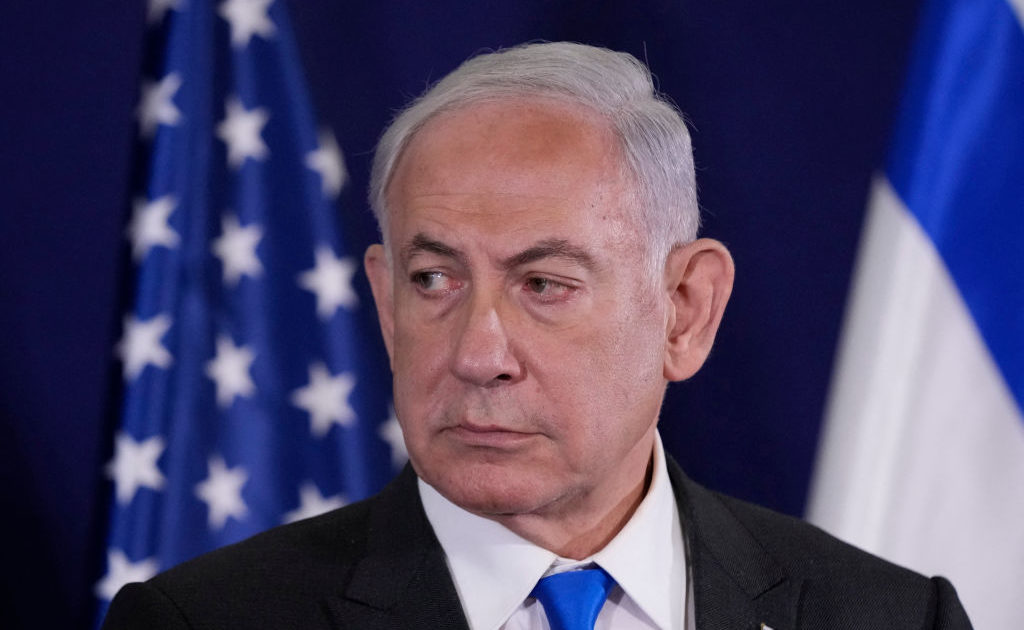This week marks three months of war that continues to devastate Gaza as the bodies and rubble pile up in the wake of the Oct. 7 Hamas massacre. What are the lessons to be learned, so far, from a Middle East war like no other?
It is the first war, since Israel’s creation in 1948, that the Jewish state is fighting on six fronts. In addition to Gaza, there is a marked upsurge in violence in the Israeli-occupied West Bank, with Hezbollah in southern Lebanon and other radical pro-Iran Shia groups in Syria, Iraq, and Yemen. Secretary of State Antony Blinken, visiting Israeli leaders on Tuesday, expressed concern that the entire region may succumb to instability. The U.S. and Israel agree that Iran is not-so-secretly stirring up these conflicts, but the Biden Administration insists that Israel’s smartest move now would be to lower the level of combat in Gaza and to focus on an exit strategy. Yet Prime Minister Benjamin Netanyahu declared recently that the war will continue for many months.
The first lesson is that Israel is barely capable of conducting battles on all these fronts at once. Lebanon is particularly vexing, as Netanyahu’s government threatens Gaza-like destruction if Hezbollah doesn’t pull back from Israel’s border, as tens of thousands of Israelis have been evacuated from their towns and farms in northern Israel. This stands in sharp contrast to years of boasting by the Israel Defense Forces and leaders that the IDF was capable of repelling all military challenges from any direction. There hasn’t been another disaster like Oct. 7, but the array of lethal threats suggests a worrying conclusion: that Israel is weaker than at any time in its 75-year history.
In 1967, the IDF astounded the world by defeating Egypt, Jordan, and Syria in six days—capturing the Sinai, the Gaza Strip, the West Bank, and the Golan Heights. But in more than 90 days, it has not been able to achieve victory in Gaza; the total elimination of Hamas is a seemingly impossible goal. The Israeli military estimates that 8,000 Hamas fighters have been killed since the war began, among the more than 23,000 Gazans listed as dead by the Strip’s Hamas-run health ministry. Most of Gaza’s launchers and rockets, especially the long-range ones which were reaching Tel Aviv, have also been destroyed. But Hamas is still able to fire an occasional barrage toward Israel, where almost all have been intercepted by the Iron Dome defense system.
A second lesson is that Israeli commando units—considered to be right up there with Seal Team 6 as the best in the world—have not been able to rescue the hostages. Only one was found and freed by the IDF, which later suffered the shame of shooting dead three Israelis who were shirtless and waving a makeshift white flag. Some 136 hostages, including eight U.S. citizens, remain in Gaza and an IDF spokesman tells us that around 25 of them are “known” to be dead. It is a macabre fact that both sides are holding corpses to be part of hostages-for-prisoners exchanges.
A third lesson is that while Israelis count on American support, the warm backing expressed by President Joe Biden has limits. He authorized $3 billion in military aid to Israel, including 14,000 missiles for Iron Dome, and is asking Congress for $14 billion more. Yet on Monday, Biden declared that he is “quietly” putting pressure on Israel to “significantly get out of Gaza.” Secretary Blinken may be finding, as he visits Israel and other countries in the region, that Netanyahu is slightly toning down the combat. But can Netanyahu keep fending off Biden and Blinken’s burning questions: When will you stop the war? When will you let in more aid to Gaza? And what is the plan for the “day after” as Washington looks to kickstart a moribund two-state solution.
A fourth lesson centers on Netanyahu himself. He is continuing to play politics, postponing any investigation into who’s to blame for the security failures of Oct. 7, while he tries to wear the mantle of a heroic wartime Prime Minister. Israeli columnists highlighted the CIA’s conclusion that he is prolonging the war for his own selfish interests, to remain in power as corruption charges continue to play out at a snail’s pace in court. To maintain his coalition, he keeps bending to the will of extreme rightwing cabinet ministers who are intent on retaining the West Bank forever—and now talk about taking over the Gaza Strip and expelling the 2.2 million Palestinians who live there.
Every Middle East crisis brings to mind some instances of missed opportunities: roads not traveled that could have led to more peaceful outcomes. We think of various trips to Saudi Arabia, at the time kept secret, by the then Mossad spy chief Tamir Pardo, the head of military intelligence General Aviv Kochavi, and the IDF chief of staff Benny Gantz. The head of Saudi intelligence, Prince Bandar bin Sultan, urged them to give up territories captured in 1967 and credibly commit to the two-state solution. But Netanyahu rejected the Saudi peace plan in favor of the status quo.
Since then, Netanyahu’s “divide and rule” tactics have backfired. For years, he let Qatar deliver billions of dollars to Hamas to prevent the emergence of a unified Palestinian leadership, recently boasting that he’s proud to have blocked the creation of a Palestinian state. That approach helped Hamas win more recruits and build up its military strength, including the construction of the tunnels that the IDF struggles to locate, clear, and destroy without killing all the hostages.
The results of Netanyahu’s narrow-minded path have led to catastrophe for both Israelis and Palestinians and nearly constant border fire between Israel and Hezbollah. Elsewhere in the region, trouble has been brewing with the Iran-backed Houthi rebels attacking international shipping in the Red Sea and the accelerated nuclear enrichment by Tehran—the kind of regional instability that President Biden feared.
Both the U.S. and Israel—as Middle East commentators declare with either alarm or pleasure—appear weak and vulnerable. There are more lessons still to be learned, and they are likely to be bitter ones.




